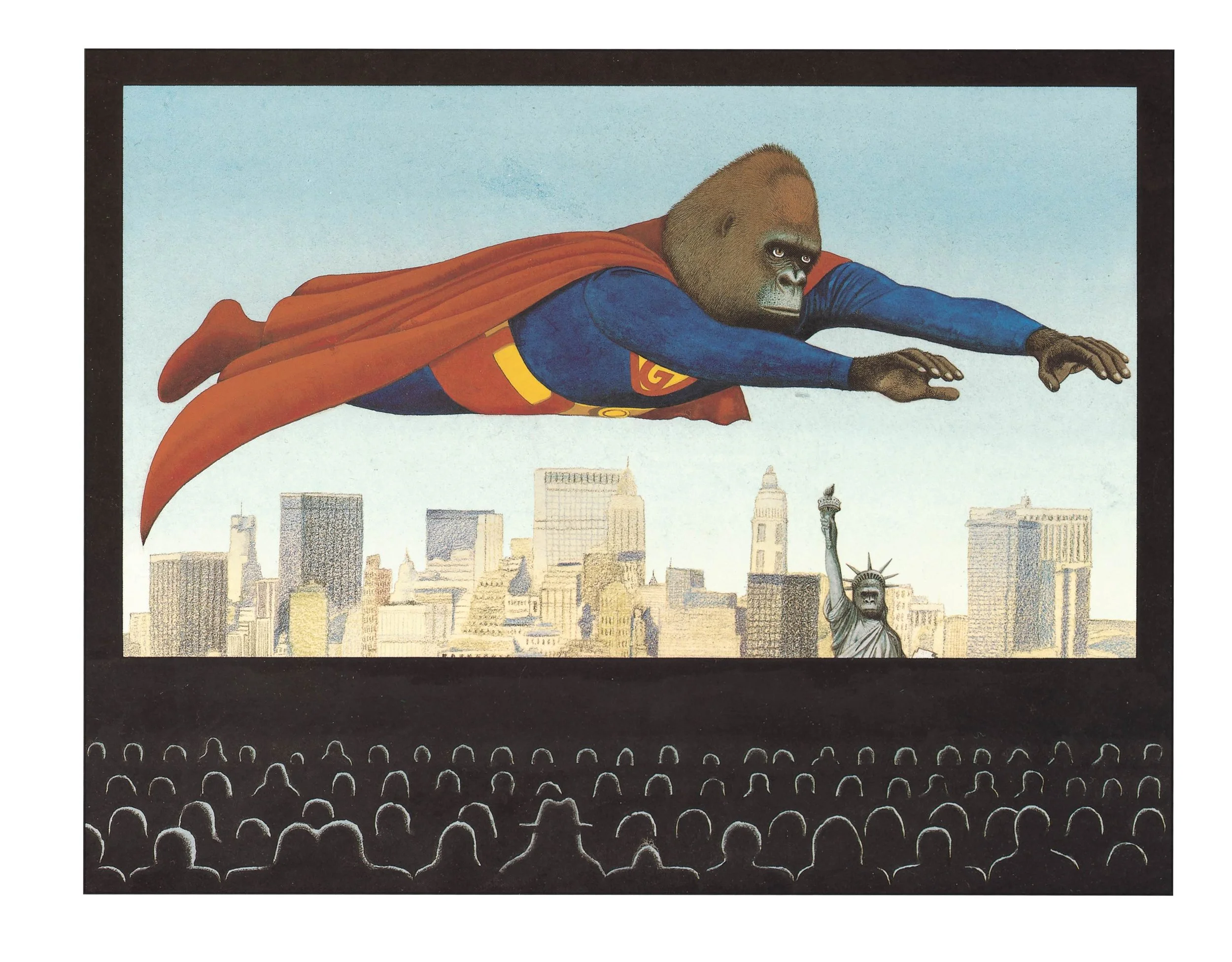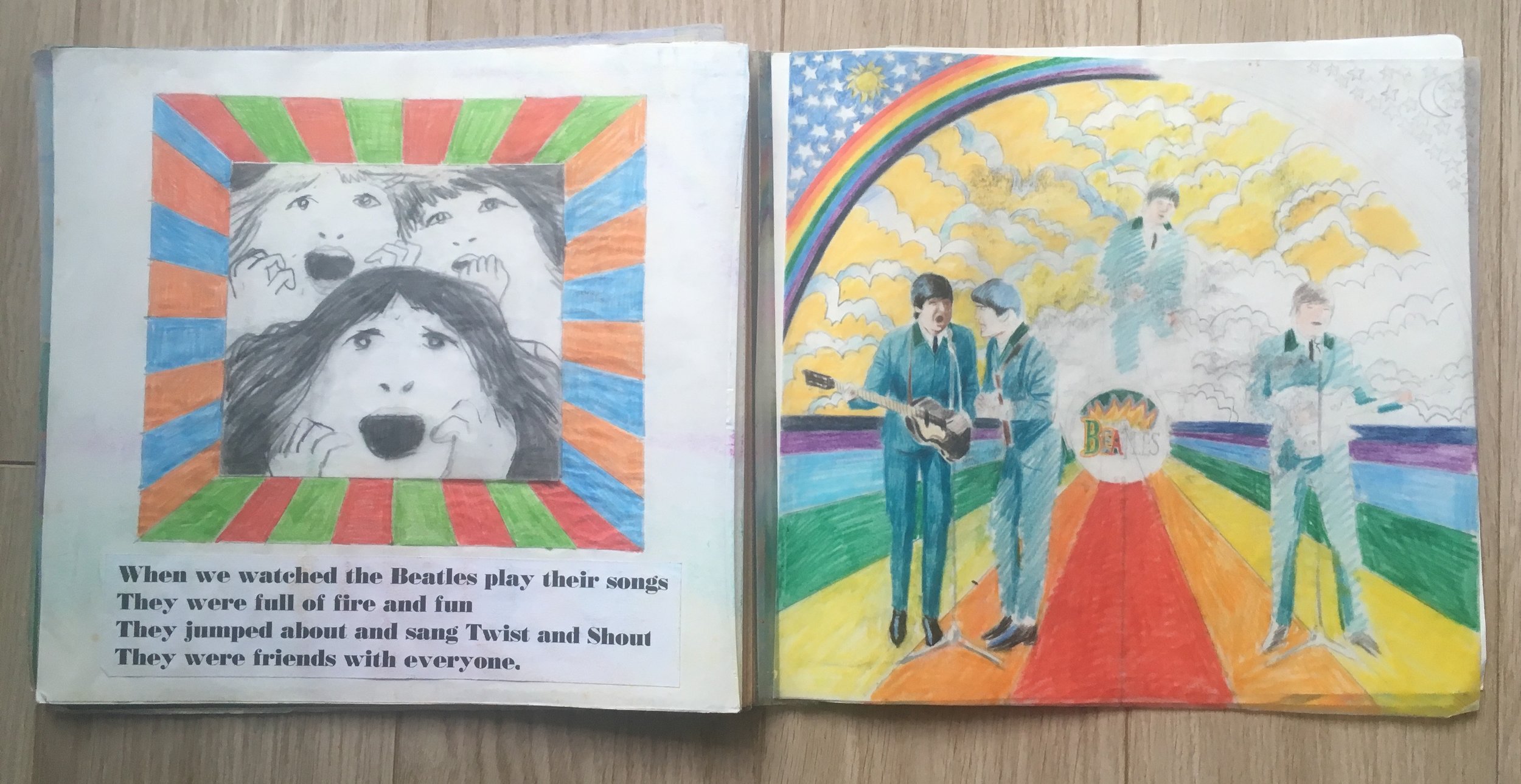Extract taken from 'Playing the Shape Game' (2003)
'... Introduction
The idea for this book was suggested some years ago by Julia MacRae, my editor for the first twenty years of my career. I started work on it many times but couldn’t get beyond the word ’I.’ It seemed so pretentious writing 'I did this . . .' or, 'I did that . . .'. Over a period of time I decided that the book wouldn't work, but I would still think of it occasionally.
One day, I’d been discussing the book over lunch with Julia and my son, Joe. As Joe and I walked to the station afterwards I was suddenly struck by the thought that he could help me – we could do it together! Joe had just finished his studies as a musician but he’d always been interested in writing throughout his school and university education. As a boy he would write imaginatively strange and funny tales. Joe had always been a keen listener to my childhood stories of life in Yorkshire with my brother, and he remembered some of these better than I did. Joe was very enthusiastic about the project so we started as soon as we got home and quickly realised that it could work. He would ask me questions and then record my answers. It freed me from the feeling of pretentiousness - after all I was just talking to my son about my childhood. Joe put in most of the work writing it up, partly in my words and partly in his own. He was living with me at the time, so we were able to talk about the book every day; we worked in the same room, and I was able to work on a picture book while he transformed our interviews.
A recurring discussion between us was about the title of the book. I tried to think of a theme that's been common to all the work I've done and found myself returning to my childhood. When my brother, Michael, and I were children we invented two games. The first involved throwing a ball to the top of the stairs, watching it bounce back down and catching it before it reached the ground. It was the result of countless wet afternoons in West Yorkshire; the listless alternative to more vigorous outdoor pursuits, played by two bored but competitive boys.
The second game - the Shape Game - was far more interesting. I have spoken of this simple drawing game to children all over the world, and they have made me realise that its prevalence in my own childhood was by no means unique. Children everywhere have invented their own versions of the Shape Game. It has certainly been a very important part of my career, for I have played it in every book I have ever made.
The rules are very simple: the first person draws an abstract shape; the second person, ideally using a different coloured pen, transforms it into something. It seems that all children love this game and are very good at it – far better than adults are. It is an unfortunate part of growing up that we lose a great deal of contact with our visual imagination. The wonder with which we look at the world diminishes, and this inhibits both our inclination to draw (most adults give up entirely) and also our ability to draw with truly unfettered creativity.
Looking back, I can see that although the Shape Game is great fun, I believe it also has a serious aspect. Essentially, the game is about creativity itself. Every time we draw a picture, or write a story, or compose a piece of music, we are playing the Shape Game. When children ask me (and they always do) where I get my ideas from, I tell them it's from the same place that they get theirs - from things that happened to me when I was a boy, from things that happened to my own children, from other people's stories, from films, from paintings, or from dreams. Everything comes from somewhere else, and when we create something we're transforming our own experience into a picture, a book, or perhaps a piece of music. We are playing our own Shape Game.
One of the interesting aspects of working on the book has been finding how many memories of childhood incidents influenced my work, often bringing to light events I had all but forgotten and whose significance I only now fully realise. My choice of illustrations reflects these memories, but the main intention of this book is to share my delight in the Shape Game and my passionate belief in the power of art to enrich our lives...'
We will be sharing more extracts from Anthony's biography over the coming weeks - so watch this space.



























